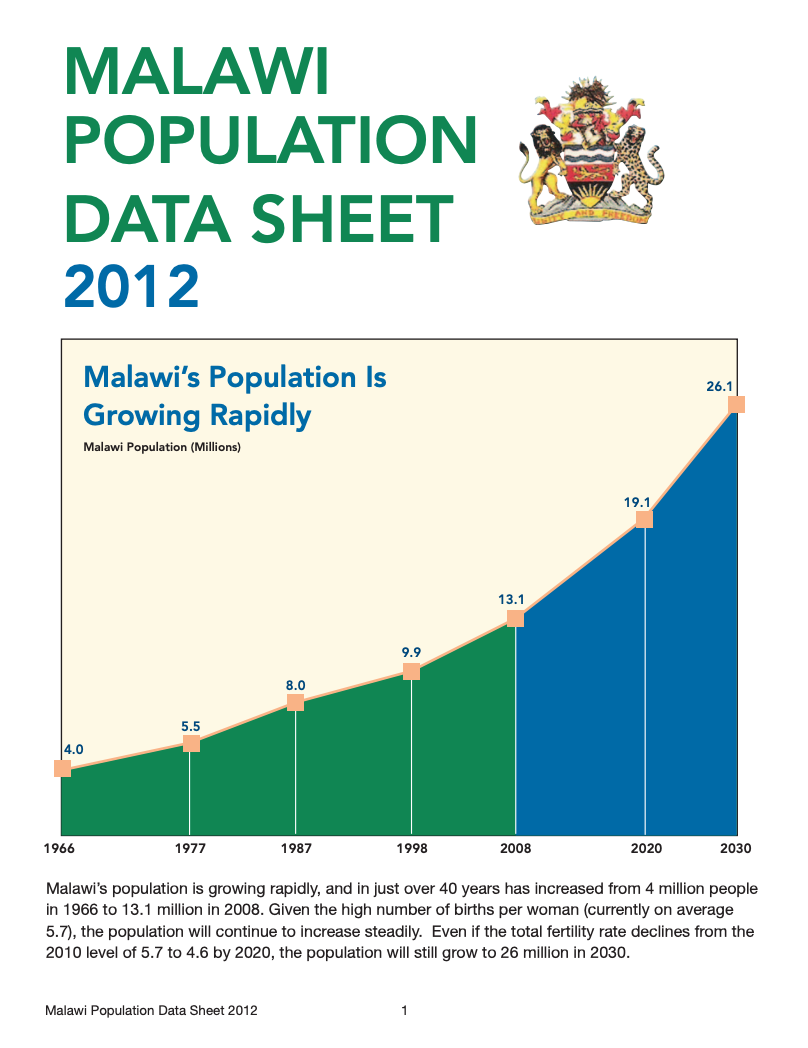
Malawi Population Data Sheet 2012
Date
May 23, 2012
Author
Focus Area
(May 2012) In just over 40 years Malawi’s population has increased from 4 million people in 1966 to 13.1 million in 2008 to near 15 million today. The population will continue to increase steadily given today’s high fertility rate of 5.7 children per woman. Even if the fertility rate declines from the 2010 level of 5.7 to 4.6 by 2020, the population will still grow to 26 million in 2030.
A large percentage of Malawi’s population, 46 percent, is below age 15. While a youthful population represents the potential for a large labor force in the future, it places a heavy burden on the working-age population (ages 15 to 64) to provide for the basic needs and services required by children and youth, such as health and education. The population is growing faster in the Northern and Central regions of the country but growth is slower in the more densely populated Southern region. There is a clear demographic divide in the age structure of the population by wealth quintile. The age structure among the poorest 20 percent of the population is extremely youthful, while the wealthiest 20 percent has begun to experience a fertility decline and make more progress toward experiencing a demographic dividend.
While Malawi has made substantial improvements in addressing its population issues, especially by increasing its use of modern contraceptive use (currently at 42 percent), large family size remains the norm despite the high demand for family planning. One out of every four women says that she does not want another child now or at all but is not using family planning. Women with higher levels of education tend to have fewer children, and women with no education have an average of more than three times as many children as women who continued their education beyond secondary level. One in five adolescent girls have begun childbearing by age 17.
The Malawi Population Data Sheet 2012 provides information for 20 population, health, and environment indicators. Selected indicators are compared over time, and among regions, wealth quintiles, and education levels.
A PowerPoint presentation has been created to illustrate the main findings of the data sheet.
The Malawi Population Data Sheet 2012 was prepared by the Population Reference Bureau’s (PRB) Informing Decisionmakers to Act (IDEA) project and the Department of Population at the Ministry of Economic Planning and Development of Malawi. This publication is made possible by the United States Agency for International Development (USAID). The data and figures are compiled from the following sources: the 2008 Malawi Population and Housing Census (Zomba, Malawi: Malawi National Statistics Office, 2008); the Analytical Report,Volume 7, Population Projections (Zomba, Malawi: National Statistics Office, 2010); and the 2010 Malawi Demographic and Health Survey (Calverton, MD: Malawi National Statistics Office and ICF Macro, 2010).

 ">
">
 ">
">